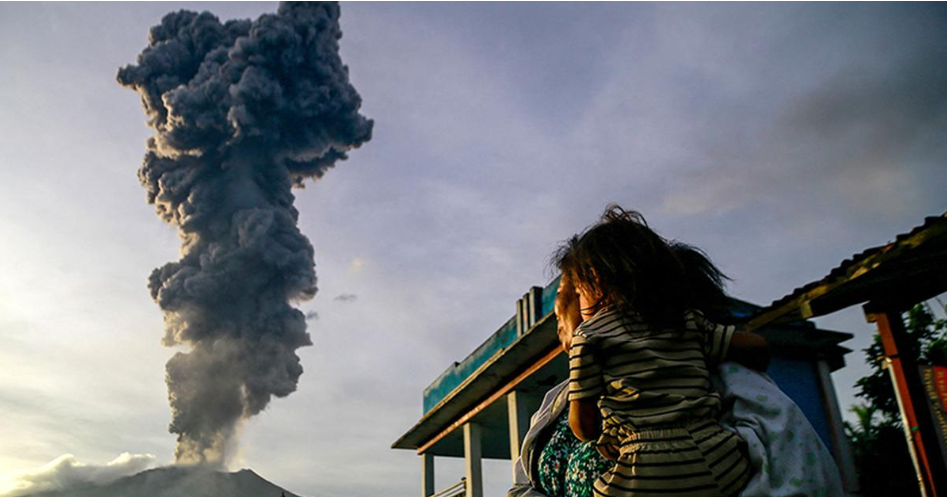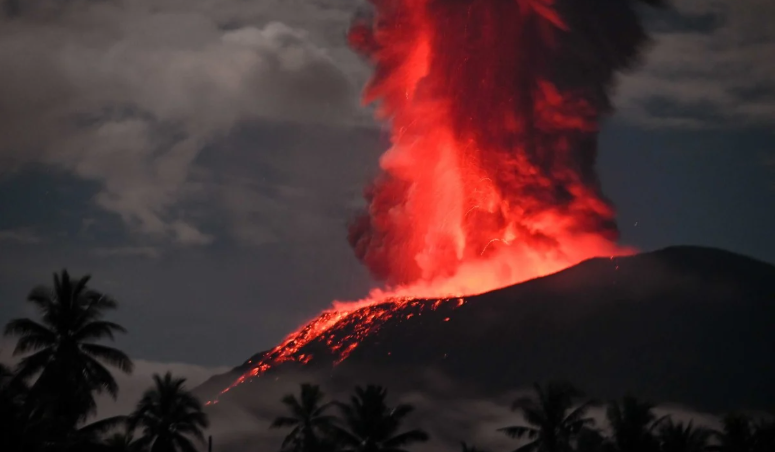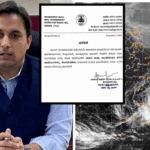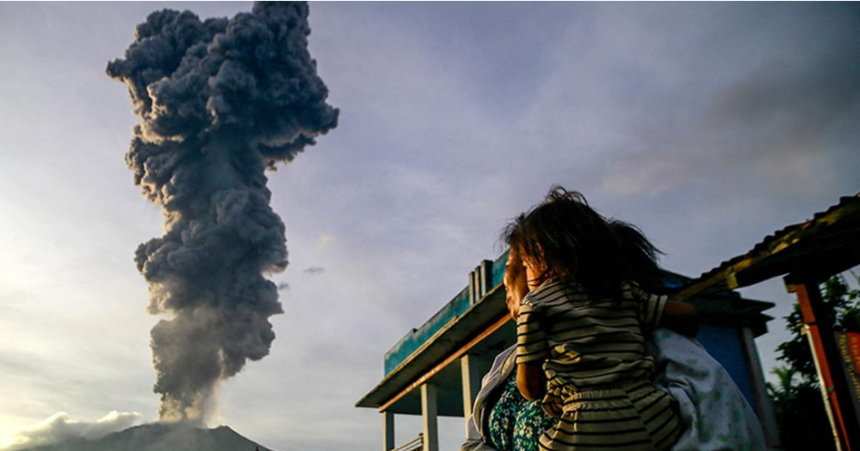Introduction
A Warning from the Ring of Fire, home to some of the world’s most active volcanoes, has been making headlines as Mount Ibu, located in North Maluku province, erupted a staggering 1,000 times this month. Known for its long history of volcanic activity, Mount Ibu’s unprecedented surge in eruptions underscores the volatile nature of Indonesia’s geography, as the nation sits on the Pacific Ring of Fire, a seismically active zone that hosts 75% of the world’s volcanoes.
This significant increase in activity has caught the attention of volcanologists, disaster management teams, and local authorities, all of whom are closely monitoring the volcano’s behavior. While no large-scale evacuation orders have yet been issued, the continued eruptions and volcanic activity pose serious threats to the nearby communities, air travel, and the environment.
In this article, we delve into the reasons behind Mount Ibu’s increased activity, its potential risks, and how Indonesia is dealing with the challenges posed by its status as the world’s largest archipelagic nation sitting atop an active tectonic zone.
Mount Ibu: The Volcanic Profile
Mount Ibu is an active stratovolcano located in the remote Halmahera Island in Indonesia’s North Maluku province. At 1,325 meters (4,347 feet) high, it is not among Indonesia’s tallest volcanoes but is still regarded as one of its more persistent, producing regular explosive eruptions since its last major eruption began in 1998.
Mount Ibu is characterized by a large crater filled with lava domes, making it particularly prone to explosive eruptions caused by pressurized magma and volcanic gases.
- Recent Activity:
According to Indonesia’s Volcanology and Geological Disaster Mitigation Agency (PVMBG), the volcano recorded over 1,000 eruptions in January 2025 alone, releasing volcanic ash, gas, and pyroclastic material into the atmosphere.- Daily eruptions sent ash clouds as high as 800 meters (2,625 feet) into the sky.
- Local tremors associated with the eruptions were felt by communities near the volcano.
- Warning Level:
Authorities have raised Mount Ibu’s alert status to Level III (Siaga), which indicates a heightened state of activity and readiness for potential evacuation orders.
Why Has Mount Ibu Erupted So Frequently?
1. Plate Tectonics of the Ring of Fire
Indonesia lies at the intersection of several major tectonic plates, including the Eurasian Plate, Indo-Australian Plate, and Pacific Plate. These plates are in constant motion, colliding and subducting under one another, creating immense geological pressure that often leads to volcanic eruptions and earthquakes.  For the more information click on this link
For the more information click on this link
Mount Ibu, specifically, lies near a subduction zone, where the Indo-Australian plate is being pushed beneath the Eurasian Plate. This tectonic activity results in magma being forced upward, causing frequent eruptions.
2. Volcanic Dome Growth
Volcanologists have noted that Mount Ibu’s crater houses lava domes, which are growing due to the continuous rise of magma. When pressure builds within the dome, it triggers explosive eruptions, releasing ash, gas, and pyroclastic flows.
3. Climate Factors
Indonesia’s tropical climate often adds another layer of complexity to volcanic activity. Rainwater infiltrating the volcanic cone can interact with magma and gases, potentially triggering steam explosions or phreatic eruptions, which occur when water turns to steam rapidly.
Risks and Impacts of the Eruptions
1. Threat to Nearby Communities
The villages surrounding Mount Ibu are home to thousands of people who depend on the region’s natural resources for their livelihoods. However, A Warning from the Ring of Fire volcanic ashfall from frequent eruptions has posed challenges to these communities:
- Air Quality Deterioration: Volcanic ash contains fine particles of silica that can cause respiratory issues and reduce air quality, particularly for vulnerable populations such as children and the elderly.
- Agricultural Damage: Crops in nearby fields have been coated with ash, A Warning from the Ring of Fire threatening food supplies and local incomes.
- Structural Damage: Roofs, roads, and infrastructure are vulnerable to damage from prolonged ashfall, particularly during heavy rain when ash mixes with water to form a cement-like consistency.
Local resident Ahmad Taufik, who lives near Mount Ibu, A Warning from the Ring of Fire described the situation:
“The ash covers everything—our homes, our crops, our water sources. We live in constant fear of a bigger eruption.”
2. Air Travel Disruptions
The ash clouds generated by Mount Ibu’s frequent eruptions also pose a significant hazard to air travel. Volcanic ash is capable of damaging aircraft engines, leading to flight delays and diversions. Airlines operating in the region, including in North Maluku and nearby provinces, have issued advisories to reroute flights away from the affected areas.
3. Potential for a Large-Scale Eruption
While the current activity remains consistent with Mount Ibu’s usual behavior, A Warning from the Ring of Fire volcanologists have warned of the possibility of an escalation in volcanic activity. A larger eruption could result in:
- Pyroclastic Flows: Fast-moving flows of hot gas and volcanic material capable of wiping out entire communities.
- Lahars: Volcanic mudflows triggered by heavy rains that can bury homes and infrastructure in their path.
- Wider Environmental Impact: Ash clouds and gas emissions could cool the atmosphere temporarily and impact global climate conditions, A Warning from the Ring of Fire though such effects are rare and depend on the magnitude of the eruption.
Government and Emergency Response
Indonesia is well-versed in disaster management, given its position as one of the most seismically active regions in the world. In response to Mount Ibu’s increased activity, A Warning from the Ring of Fire authorities have stepped up measures to ensure public safety and minimize disruption:
1. Evacuation Plans
The PVMBG has advised residents living within a 5-kilometer (3-mile) radius of the volcano to prepare for potential evacuation. Temporary shelters and aid centers have been set up to accommodate displaced residents if needed.
2. Ashfall Advisories
The Indonesian Meteorological, Climatological, and Geophysical Agency (BMKG) has been issuing daily ashfall forecasts to help communities prepare for potential exposure. Masks and clean water supplies are being distributed to mitigate health risks.
3. Monitoring and Early Warning Systems
A team of scientists stationed at a nearby observatory is monitoring seismic activity, A Warning from the Ring of Fire gas emissions, and volcanic deformation in real time. Indonesia’s Early Warning System (EWS), implemented after several high-profile disasters, plays a key role in providing timely alerts to affected regions.
4. Public Awareness Campaigns
Local authorities and NGOs are conducting educational outreach efforts to teach residents how to respond to volcanic emergencies, A Warning from the Ring of Fire including evacuation drills and proper ashfall safety protocols.
Indonesia’s Volcanic Heritage
1. Volcanic Hotspot of the World
Indonesia’s unique location along the Ring of Fire makes it home to 147 active volcanoes, more than any other country in the world. While this brings certain challenges, it also provides the country with:
- Fertile Soil: Volcanic eruptions replenish the land with nutrients, A Warning from the Ring of Fire making regions around the volcanoes highly fertile and suitable for agriculture.
- Tourism Potential: Famous volcanoes like Mount Bromo, Mount Merapi, and Mount Rinjani attract thousands of tourists every year, boosting local economies.
2. Historical Eruptions
Indonesia has witnessed some of the largest volcanic eruptions in history:
- Mount Tambora (1815): Produced the largest eruption ever recorded, leading to a “Year Without a Summer” globally.
- Krakatoa (1883): Created massive tsunamis and caused devastating loss of life.
- Mount Merapi (2010): One of the most recent eruptions to cause widespread destruction and fatalities.
Mount Ibu’s increased activity adds to this legacy, A Warning from the Ring of Fire underscoring the need for ongoing research and preparedness.
Environmental and Scientific Implications
1. Climate and Atmospheric Impact
Volcanoes like Mount Ibu emit significant amounts of gases, including carbon dioxide (CO2) and sulfur dioxide (SO2), which can influence weather patterns and atmospheric conditions. While current emissions remain localized, a larger eruption could have global climate consequences, A Warning from the Ring of Fire temporarily cooling temperatures due to aerosols blocking sunlight.
2. Opportunities for Scientific Research
The frequent eruptions provide volcanologists with valuable data to better understand volcanic behavior and forecast future eruptions. Satellite imaging, drone surveys, A Warning from the Ring of Fire and on-ground seismic monitoring are all being utilized to study Mount Ibu’s dynamics.  For the more information click on this link
For the more information click on this link
Global Significance of Mount Ibu’s Activity
Mount Ibu’s eruption activity has drawn attention not only from Indonesian authorities but also from international researchers and disaster management organizations. The United Nations Office for Disaster Risk Reduction (UNDRR) has pointed to Indonesia as a case study for managing natural disasters in seismically active regions.
The eruptions also highlight the need for increased global cooperation in monitoring volcanic and seismic activity, as volcanic eruptions can disrupt global aviation, trade, A Warning from the Ring of Fire and weather systems.
Conclusion
The recent surge in Mount Ibu’s volcanic activity, with over 1,000 eruptions in just one month, is a stark reminder of both the power and fragility of Indonesia’s natural environment. As the nation grapples with the immediate risks posed by Mount Ibu, A Warning from the Ring of Fire it also highlights the broader challenges of coexisting with nature in one of the world’s most seismically active regions.
With careful monitoring, proactive disaster response, A Warning from the Ring of Fire and strengthened community awareness, Indonesia continues to demonstrate its resilience in managing its rich but challenging volcanic heritage. Mount Ibu serves as a powerful symbol of the duality of nature—a source of both destruction and renewal—and a call to action for global preparedness in the face of unpredictable natural forces. ALSO READ:- Biden Urges Americans to ‘Keep the Faith’ as He Spends Final Full Day as President in South Carolina 2025





